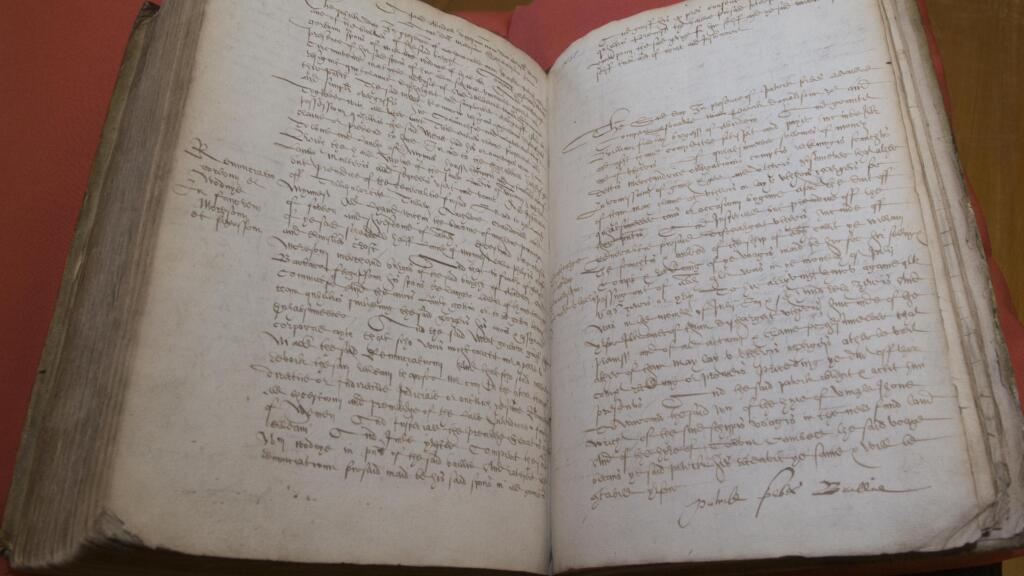

“William” of Aberdeen was first Scottish ship to sail to North America
The earliest documented reference to a Scottish ship sailing to North America has been discovered by a local researcher at Aberdeen City & Aberdeenshire Archives.
Thomas Brochard, an Honorary Research Fellow at the University of Aberdeen, made the amazing find while he was reading a late sixteenth century Council Register when he noticed an entry relating to a vessel, the “William” of Aberdeen, having made a voyage to “the new fund land” (Newfoundland) in 1596.
Until now, the earliest documented Scottish ship to sail the Atlantic was a Dundee vessel named the “Gift of God”, which had sailed from Portugal in 1600.
From an earlier reference in the same volume it is known that the “William” had arrived back in Aberdeen in May 1596 from Bordeaux with a cargo of wine, having stopped at Burntisland on route.
The entry in which the ship is mentioned as having crossed the Atlantic relates primarily to debts incurred by Patrick Donaldson younger, a burgess of the town, and burgess William Findlay, the master and skipper of the “William”.
The records reveal that both Patrick and William were involved in the fitting-out and freighting of the vessel between it leaving Aberdeen in July 1596 and its return four years later.
The other partners and owners in the Newfoundland venture are given as Archibald Smith and burgess Alexander Kempt. A Colin Campbell is also noted as being on board the vessel as was a carpenter by the name of John.
The precise nature of the cargo on the outward voyage is not known however, from later entries in the same volume it becomes clear that the “William” returned to Aberdeen from North America via the port of Aveiro in Portugal where it picked up a cargo of salt, most probably destined to be used for preserving fish and meat.
Remarkably, several of the Portugal to Aberdeen crew are also named: John Barclay, Alexander Currie, David Morton, David Easton, William Brown, Robert Fleming, Paul Fraser, William Young, and John Dow.
It is possible that some, if not all these men, might have been crew members on the Newfoundland voyage. They had paid money to Patrick Donaldson, one of the owners and the ship’s clerk, to buy their share of the ship’s cargo of salt. On arrival in Aberdeen the owners refused to pay the crew their whole share as the cargo was spoiled due to a leak in the ship’s hold. The dispute then came before the Burgh Court and was recorded in the Council Register.
In 1596, when the “William” made her long westward voyage, Scottish interests in North America were still very much in their infancy. The tentative trading contacts of which the “William” was one example were yet to develop into the settlements that became home to the Scottish diaspora during the seventeenth, eighteenth and nineteenth centuries.
The Lord Provost of Aberdeen Barney Crockett said: “Aberdeen is a proud maritime city, and this is a hugely important historical find. It clearly demonstrates that Aberdeen was at the forefront of Scottish trade to the New World as far back as the 16th century.
“Our archives are recognised as being of outstanding historic importance to the UK, and we are extremely fortunate that our city’s forefathers had the good sense to keep these records safe for future generations to learn from and enjoy.”
Thomas Brochard said: “I was trawling through the records when my eyes chanced upon the words ‘new fund land’. This turned out to be an astonishing discovery. I’m sure other gems like this are waiting to be discovered in the burgh records which are an incredibly rich resource for historians and fully deserve their UNESCO designation as nationally important documentary heritage.”
Phil Astley, City Archivist, said: “Quirky and unusual stories quite often come to light when reading through original records – it’s part of the fun of working in an archive, however, it’s rare to have a find as historically significant as that made by Thomas. It is even more remarkable that we know the names of several crew members.”
For more information on Aberdeen and Aberdeenshire Archives visit www.aberdeencity.gov.uk/archives
